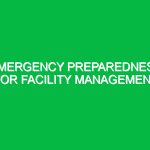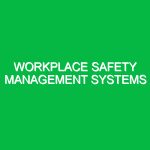In an increasingly unpredictable world, the importance of effective emergency preparedness cannot be overstated. Safety innovations in emergency preparedness are vital in the Health, Safety, and Environment (HSE) domain, as they provide robust frameworks to mitigate risks and enhance response strategies. This article explores the latest advancements in safety innovations, the associated risks, best practices, and the regulatory landscape that governs emergency preparedness.
Understanding Safety Innovations in Emergency Preparedness
At its core, safety innovations in emergency preparedness refer to the novel technologies, strategies, and methodologies designed to improve the safety and efficacy of emergency response efforts. This encompasses a wide array of tools and practices, from advanced communication systems and personal protective equipment (PPE) to training simulations and community engagement initiatives. These innovations play a crucial role in ensuring that organizations and communities are prepared to respond effectively to various emergencies, whether they stem from natural disasters, industrial accidents, or public health crises.
In the realm of HSE, these innovations foster a proactive approach. They not only help mitigate risks but also empower individuals and organizations to act decisively in times of crisis. For instance, the integration of artificial intelligence (AI) in emergency response has revolutionized how we predict, prepare for, and respond to emergencies. Through data analysis and pattern recognition, AI can provide real-time insights that enhance situational awareness. This capability can be instrumental in the evacuation planning process during natural disasters, allowing for more efficient resource allocation and improved safety outcomes.
Identifying Potential Hazards and Risks
When exploring safety innovations in emergency preparedness, it is essential to understand the potential hazards associated with various emergency situations. Emergencies can be broadly categorized into natural disasters, technological incidents, and human-induced crises, each presenting unique risks.
Natural Disasters
Natural disasters, such as hurricanes, earthquakes, floods, and wildfires, pose significant risks to life and property. The unpredictability of these events makes preparedness paramount. For instance, hurricanes can cause devastating winds and flooding, while earthquakes can strike suddenly, resulting in structural damage and casualties. Innovations like early warning systems, which utilize satellite technology and predictive algorithms, have proven effective in providing timely alerts to vulnerable populations. These systems facilitate informed decision-making, allowing communities to evacuate or implement protective measures before disaster strikes.
Technological Incidents
Technological incidents, including chemical spills, nuclear accidents, and cyber-attacks, also present considerable risks. For example, a chemical spill in an industrial area can lead to hazardous exposure for workers and surrounding communities. Safety innovations such as automated monitoring systems can detect leaks in real-time and trigger rapid response protocols. These innovations minimize human error and enhance the overall safety of emergency operations.
Human-Induced Crises
Human-induced crises, such as terrorism and civil unrest, require a different approach. The unpredictability of these scenarios necessitates flexible, adaptive strategies. Innovations such as drone surveillance and social media monitoring can provide critical intelligence, allowing emergency responders to assess situations faster and more accurately. In a hypothetical scenario where a public gathering faces a potential threat, real-time data collection can help agencies deploy resources effectively and ensure public safety.
Best Practices for Safety Innovations in Emergency Preparedness
Implementing safety innovations in emergency preparedness requires a structured approach. Here are some best practices that organizations can adopt to enhance their preparedness efforts:
1. Comprehensive Training Programs
Training is a cornerstone of effective emergency preparedness. Organizations should invest in comprehensive training programs that incorporate the latest safety innovations. For example, virtual reality (VR) simulations can provide immersive training experiences, enabling personnel to practice emergency response in a controlled environment. This hands-on approach not only enhances skill retention but also boosts confidence among responders.
2. Community Engagement and Awareness
Engaging with the community is crucial for successful emergency preparedness. Organizations should conduct outreach programs to educate the public about potential risks and available safety innovations. By fostering a culture of preparedness, communities become more resilient. For instance, initiatives that involve local schools in emergency drills can instill a sense of responsibility and awareness among younger generations.
3. Regular Drills and Simulations
Regular drills and simulations are essential for testing the effectiveness of emergency response plans. Organizations should incorporate new safety technologies into these exercises to ensure that responders are familiar with the latest tools and practices. For example, using mobile apps that facilitate communication during emergencies can streamline information sharing among responders. Conducting drills that simulate various scenarios—like a chemical spill or an active shooter situation—can help teams identify gaps in their response strategies and make necessary adjustments.
4. Leveraging Technology
Technology plays a pivotal role in safety innovations. Organizations should embrace advanced tools, such as mobile applications that provide real-time updates during emergencies or wearable technology that monitors vital signs of responders. For instance, during a wildfire response, wearable sensors can track firefighters’ health metrics, ensuring they receive immediate assistance if they become overheated or fatigued. By leveraging technology, organizations can enhance situational awareness and improve overall safety.
Regulatory Standards Governing Safety Innovations
Compliance with established regulations is critical in the field of emergency preparedness. Various standards govern the implementation of safety innovations, ensuring that organizations adhere to best practices. Key regulations include:
1. Occupational Safety and Health Administration (OSHA) Standards
OSHA sets forth regulations that require organizations to maintain a safe workplace, including emergency preparedness protocols. Compliance with these standards ensures that organizations are equipped to handle emergencies effectively and protect their employees.
2. National Fire Protection Association (NFPA) Codes
The NFPA provides codes and standards that guide fire safety and emergency response. These codes emphasize the importance of regular training, inspections, and the use of appropriate safety equipment, ensuring that organizations are prepared for fire-related emergencies.
3. Federal Emergency Management Agency (FEMA) Guidelines
FEMA offers extensive guidelines for emergency management, including the National Incident Management System (NIMS). NIMS provides a standardized approach for emergency response, enabling organizations to coordinate effectively during crises.
Conclusion
Safety innovations in emergency preparedness are essential in the HSE domain, equipping organizations and communities to face a variety of hazards. By understanding potential risks and implementing best practices, organizations can foster a culture of preparedness that enhances safety outcomes. Furthermore, adherence to regulatory standards ensures that these innovations are applied effectively, safeguarding lives and property. As we look to the future, continued advancements in technology and community engagement will play a pivotal role in shaping the landscape of emergency preparedness, ensuring that we are better equipped to respond to the unexpected.


